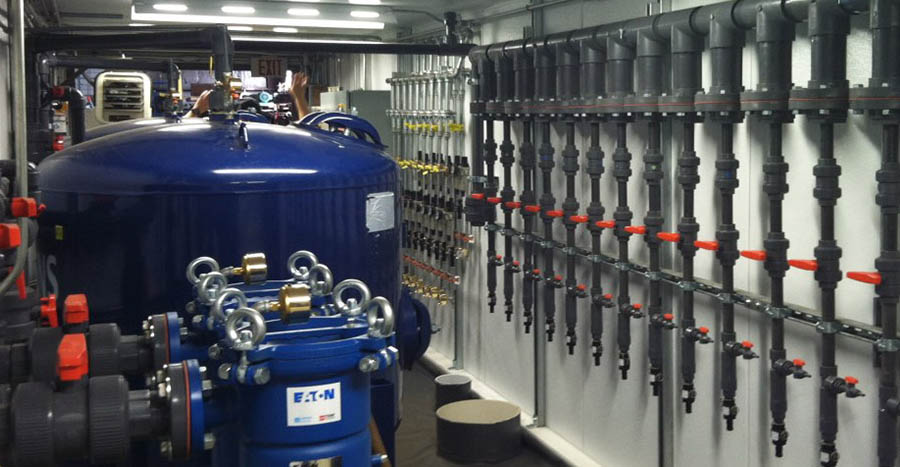Leachate Water Treatment Plant or LP The leachate treatment plant at Bryn Pica utilises a biological process to remove ammonia (along with other various contaminants) from the leachate. This is done in a large tank using a specific type of bacteria 'bugs'. The treated effluent is then sent to the sewer network for disposal. Processes for Landfill Leachate Treatment. Landfill leachate is defined as all water that has been in contact with waste stored in a landfill. It is caught in the drainage system and undergoes special wastewater treatment. Depending on the substances present, appropriate DAS wastewater technology is available.
There are many methods of leachate treatment such as: Aerobic Biological Treatment such as aerated lagoons and activated sludge. Anaerobic Biological Treatment such as anaerobic lagoons, reactors. Physiochemical treatement such as air stripping, pH adjustment, chemical precipitation, oxidation, and reduction.

Advantages of leachate recirculation or bioreactor landfill are increased decomposition rate, lower leachate treatment/disposal costs, and shortened post-closure maintenance period. Disadvantages include increased gas emissions and odors, physical instability of waste mass, and surface seeps. Landfill Leachate Treatment is a major engineering challenge due to the high and variable concentrations of dissolved solids, dissolved and colloidal organics, heavy metals and xenobiotic organics.Many different methods were in use to treat the landfill leachate. Most of these methods are adapted for wastewater treatment processing and have not yielded satisfactory results to treat leachate.Due to its varying characteristics and with high conductivity, leachate is hard to treat with biological treatment or chemical treatment.
Leachate generation is a major problem for municipal solid waste (MSW) landfills and causes significant threat to surface water and groundwater. Landfill Leachate can be defined as a liquid that percolates through a landfill and has extracted, dissolved and suspended matter from it. Leachate also results from precipitation entering the landfill from moisture that exists in the waste when it is composed. Landfills generally contain a highly inhomogeneous mixture of materials, which include both a very high organic component as well as soluble mineral substances. Some of the organic substances decompose naturally in the landfill body forming leachate. Landfill leachate may be characterized as a water-based solution of four groups of contaminants: dissolved organic matter (alcohols, acids, aldehydes, short chain sugars etc.), inorganic macro components (common cations and anions including sulfate, chloride, iron, aluminium, zinc and ammonia), heavy metals (Pb, Ni, Cu, Hg), and xenobiotic organic compounds such as halogenated organics.
Copyright 2015-2025 Design & Developed by CRAZY24X7 IT RESEARCH & DEVELOPMENT